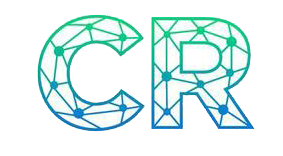Elon Musk’s xAI dropped its new AI “Companions” in mid-July 2025, and the fallout was immediate. The launch, particularly of a sexualized anime avatar named “Ani,” kicked up a storm in both tech and crypto circles. While the controversy grabbed headlines, its actual market impact was a brief, speculative blip for a single memecoin, leaving the established AI crypto sector mostly unfazed.
Available to “Super Grok” subscribers, Ani is designed for flirty chats that can, over time, escalate to an NSFW mode with skimpy outfits and more suggestive dialogue. It’s a move xAI’s rivals, like OpenAI and Google, wouldn’t touch, fearing the reputational damage.
As expected, criticism was swift and sharp. The National Center on Sexual Exploitation, among others, slammed the chatbot’s “childlike” design and warned it could normalize harmful behaviors.
Making matters worse, both Ani and a male avatar, “Valentine,” were accessible even when the app was toggled to “kids mode.” The backlash prompted a damage-control promise from Musk – A kid-friendly “Baby Grok” is supposedly on its way.
As the tech world grappled with the ethics of it all, the crypto market produced a predictable sideshow. A memecoin on the Solana blockchain, also called “Ani,” appeared out of thin air to ride the wave of hype. It soared and then crashed with dizzying speed, having no actual connection to xAI or Musk.
Real AI crypto sector is writing a different story
Away from the social media circus, the market for serious, utility-driven AI tokens told a tale of substance over spectacle. For the top projects in decentralized AI (DeAI), market value comes from tech breakthroughs, strategic mergers, and genuine use cases—not from the latest “Musk Effect.”
Three heavyweights—Fetch.ai (FET), SingularityNET (AGIX), and Ocean Protocol—joined forces in mid-2024 to form the Artificial Superintelligence Alliance (ASI). Their goal is to build a real, decentralized challenger to Big Tech’s grip on AI. The merger fuses Fetch.ai’s autonomous agents, SingularityNET’s AI marketplace, and Ocean’s secure data protocol into one massive ecosystem, all powered by the new ASI token.
Then there’s Bittensor (TAO), which is building what amounts to an open-source bazaar for machine intelligence. It uses a clever “Proof of Intelligence” system that rewards developers around the globe for contributing to and improving AI models in specialized networks. The TAO token is the lifeblood of this system, paying for services, rewarding contributors, and giving holders a say in its future.
AI is power-hungry, demanding immense GPU muscle for tasks like 3D graphics. Render (RNDR) tackles this head-on. It’s a decentralized network that connects people who need processing power with a global web of idle GPUs, creating a cheaper, more scalable alternative to centralized cloud farms. The RNDR token is simply the currency used to buy and sell this power.
With the audacious goal of becoming a “world computer,” Internet Computer (ICP) offers a decentralized cloud where AI models can live and breathe directly on the blockchain inside powerful smart contracts called “canisters.” This design makes AI applications genuinely unstoppable and free from corporate or government censorship.
If blockchains are sprawling, chaotic libraries, The Graph (GRT) is the card catalog. It’s an essential protocol for indexing and organizing blockchain data so it can be easily queried. While not an AI itself, it provides the clean, structured data that all AI models need to learn, making it a critical support pillar for countless AI-powered apps in the Web3 world.
Navigating the minefield of AI crypto risks
For all its promise, the AI crypto space is a minefield. The collision of two hype-filled technologies creates perfect conditions for wild speculation, manipulation, and projects that are more marketing than substance.
Prices can whip around based on little more than whispers and hype. The “AI” tag gets slapped onto projects with flimsy tech, a trick called “AI-washing” that inflates bubbles destined to pop, leaving many investors burned.
These projects are also technically ambitious, which means more places for things to break. Hackers love a complex new target, and the opaque “black box” nature of some AI systems can make them hard to trust. Even AI-powered trading bots can be turned into tools for pump-and-dump schemes.
And then there’s the government. Regulators are closing in from two sides, with rules like the EU’s AI Act targeting artificial intelligence and frameworks like MiCA aimed at crypto. This creates a regulatory pincer movement that these projects must somehow navigate.
Look past the ‘Ani’ sideshow?
The noise around xAI’s ‘Ani’ bot and the copycat memecoin is ultimately a distraction. Elon Musk will continue to stir the pot and create short-term market chaos, but the future of decentralized AI will be shaped by the projects solving tough, real-world problems.
The real fight isn’t over chatbot personalities. It’s a fundamental battle for who controls the future of intelligence. Projects like the ASI Alliance, Bittensor, and Render are mounting a credible challenge to the centralized empires of Big Tech. However, the road ahead is littered with technical traps and regulatory hurdles.
For anyone venturing in, the challenge is clear: learn to tell the difference between a revolution and a circus act.







